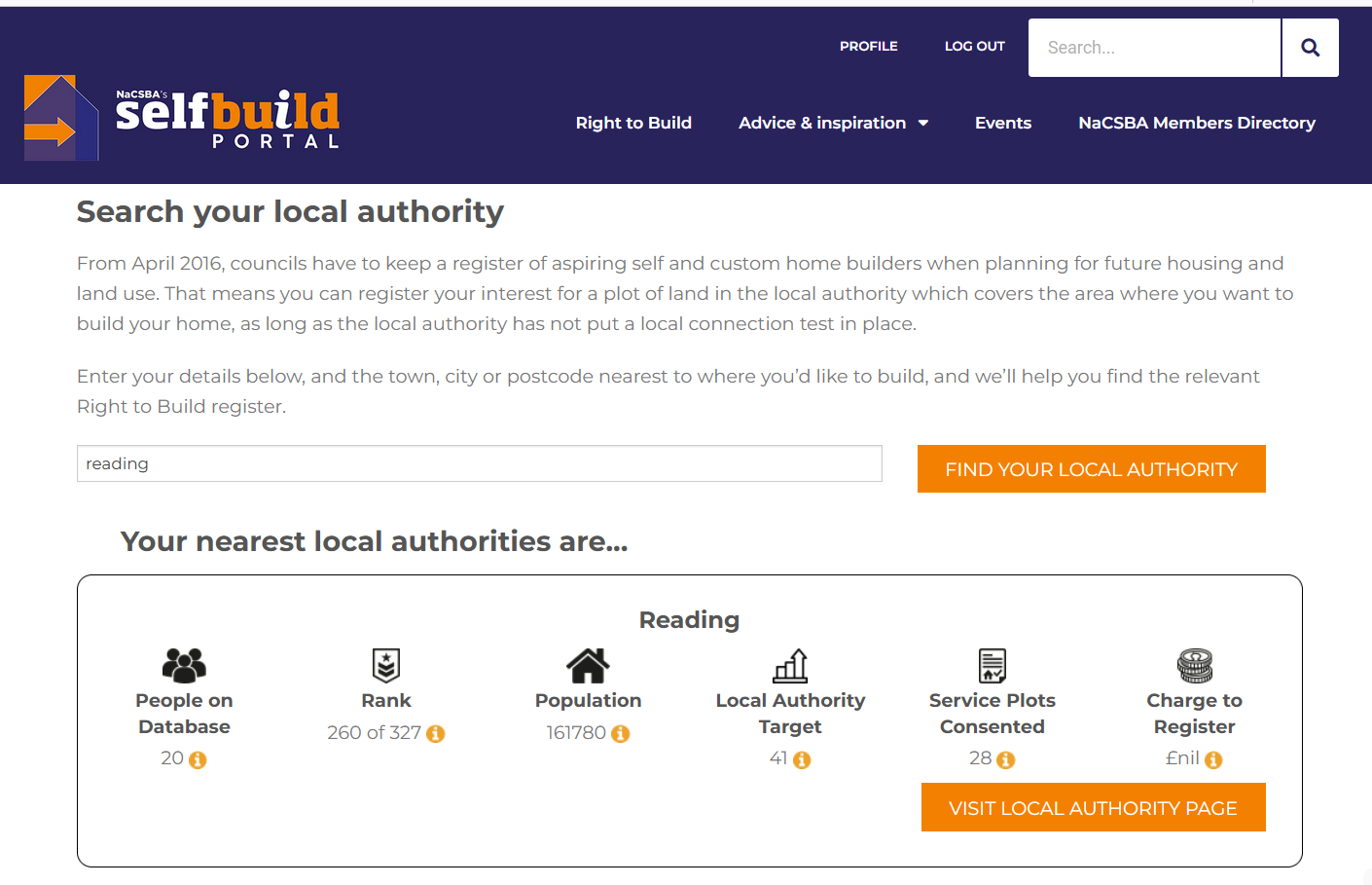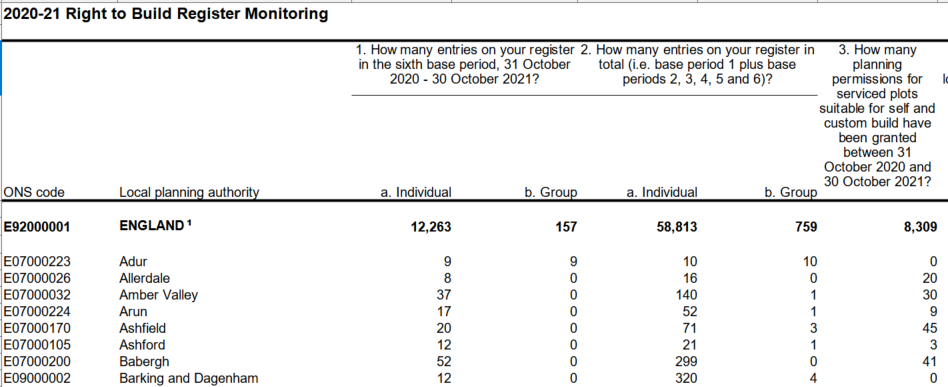Is getting planning consent easier for small sites if they are self-build
Hopes have been raised by a recent appeal Decision allowing 4 self-build/ custom-build dwellings on a site in Wyre Forest which was partly beyond the defined settlement boundary (appeal ref APP/R1845/W/21/3284761). Part of the Inspector’s reasoning was the evident need for such sites, given 45 applicants on the local self build register. To what extent does this appeal help other small sites?
Support for self build in the National Planning Policy Framework
NPPF paragraph 62 requires planning policies to address the need of self builders in two key ways, both of which were instrumental in allowing the Wyre Forest appeal.
Firstly, it requires the LPA to address self build in its policies. In the Wyre Forest Decision, the Inspector noted, “there is no relevant development plan policies relating to self-build and custom building housing. Therefore, paragraph 11 d) of the Framework is engaged and permission should be granted unless any adverse impacts of doing so would significantly and demonstrably outweigh the benefits, when assessed against the policies in the Framework taken as a whole.”
Secondly, NPPF paragraph 62 is accompanied by footnote 28 which states, “Under section 1 of the Self Build and Custom Housebuilding Act 2015, local authorities are required to keep a register of those seeking to acquire serviced plots in the area for their own self-build and custom house building. They are also subject to duties under sections 2 and 2A of the Act to have regard to this and to give enough suitable development permissions to meet the identified demand.”
To reflect this, PINS’ Inspectors internal training manual notes in relation to self build sites, “If insufficient permissions have been given to meet demand in accordance with the statutory duty, then this will be a material consideration in favour of granting permission”.
In the Wyre Forest Decision the Inspector did not accept the LPA’s case that outstanding consents for small plots provided for self builders. The thorny issue of ‘what counts’ is touched on briefly in Planning Practice Guidance Paragraph: 038 Reference ID: 57-038-20210508. In effect, self build/ custom build housing has its own land supply requirements which many LPAs fail to meet.
Obtaining statistics helpful for self build plots
Evidencing the number of consented self build plots and comparing this to the number seeking self build plots is relatively straightforward. Three good sources of statistics are:
1. The NaCSBA’s Self Build Portal, which provides data for every local planning authority in the format of the screenshot below. You need to register to view, but it’s free.

2. Government Statistics, published annually. The excel table provides numbers registering on the self-build register (parts 1 & 2) compared to the number of planning consents granted for the previous year (part 3). This gives a finer grain of detail than is available on the NaCSBA's summary (and is sometimes different, due to different data collection methods). A screenshot of the first part of the table is below:

Perhaps more usefully, the Government data provides a wealth of information on restrictions placed on the register (parts 4-6) and whether there are Local Plan, SPD or Neighbourhood Plan policies in operation (parts 9a-9h). The table is particularly useful for identifying whether a LPA is taking a positive or negative approach to self-build.
3. The LPA’s Authority Monitoring Report (AMR), which is sometimes available but in all too many cases this statutory report is missing or years out-of-date.
It goes without saying it's sensible to include the Right to Build statistics at planning application stage as it's preferable to avoid the need to appeal in the first place.
Is planning consent easier for self-build?
Beyond the hype, it remains remarkably difficult to obtain planning consent for self build plots. The evidence is pretty damning. Last year the Prime Minister asked Richard Bacon to conduct an independent review into the effectiveness of Government efforts over the last decade to increase self build in the UK. By 2019 the number of self-build completions was a dismal 15,100, comprising a paltry 6% of overall new builds. This compares very poorly with an average of 40% of new homes being self-commissioned in developed nations, especially Europe. Despite all the encouragement given to self build, it simply isn’t being delivered.
In August 2021 the Bacon Review noted, “We need permissioned and serviced plots of land available everywhere to allow consumers to make real choices”. Clearly one of the difficulties remains too few plots coming through the planning system, leading to the Bacon Review including planning reform among its recommendations to the Government.
We checked the success rate for appeals for self-build over the past 12 months to 1st May 2022. Only 11.2% of self-build appeals were allowed: a miserably small number of successful appeals out of the 278 self-build and custom-build appeals over the year. The screenshot below from Appeal Finder’s map shows the location of the 31 self-build appeals which were allowed over the past 12 months.

The low success rate for self-build appeals could be because at least some LPAs take a positive approach, leaving only the worst cases to the appeal system. Certainly the number of appeals is small compared to the total number of self build plots completed. Nevertheless, the unusually low success rate at appeal needs explaining. Why are so few allowed?
The problems in gaining planning permission for self build
Many self-build appeals are dismissed for one of the following reasons:
• contrary to a Local Plan’s settlement boundary and not justifiable under ‘exceptions’ policies
• an unsuitable location such as not being close enough to facilities
• out of character with the neighbourhood or surrounding properties
The Wyre Forest appeal Decision is typical with the Inspector starting with the Local Plan policies. The Inspector noted part of the site lay beyond the settlement boundary for ‘Far Forest’ (no joke, there really is a village of that name!) Nevertheless the Inspector noted the site was surrounded by existing built form, was adjacent to a school, and would integrate with the character of the village. The evident need for self build was only a deciding factor because there was little to weigh against the proposal.
In most self build appeals it appears Local Plan policies, location or compatibility with neighbours present too large a stumbling block to overcome with statistics evidencing need. In most cases, if the local planning authority has refused the application, it is unlikely an appeal Inspector will come to a different view.
Given this situation, why do applicants go ahead with an appeal? Part of the problem is self-builders’ aspirations are simply not met by a tiny plot in an urban environment. Most self builders dream of a large plot with lovely views at a reasonable price which isn’t snapped up instantly by a larger developer. Such sites are as rare as hens teeth in the English planning system. In such circumstances it’s no surprise some resort to a low chance appeal as a desperate measure.
The Bacon Review notes, “big housebuilders chiefly compete not in the market for new homes but in the market for land. I discuss this important phenomenon in greater detail in Chapter Six. Land rationing has inflated prices, suppressed the size of new homes and gardens, blunted innovation and constrained output. Moreover, this has become hard-wired into the system. Apparently, we are just supposed to accept that land comes forward almost exclusively as large strategic sites. And we are also just supposed to accept, apparently, that individuals, communities and small builders wishing to build homes – as they have done for centuries – simply cannot access the land market.”
Strategies for getting consent for self and custom build sites
We can hope for planning reform to make self-build easier as recommended by the Bacon Review but in the meantime, what practical measures can increase the chances of success for a self-build site? There are a number of strategies:
• Don’t flog a dead horse: sometimes its best to walk away and find another site in a different area. The Government annual data on self build is a good way to identify local planning authorities with a more favourable approach. As they grant planning consent more readily, they generally have few self-build appeals.
• Don’t even get on a lame horse: avoid LPAs with negative policies. These show through in a string of failed appeals on the Appeal Finder map for your area. Simply use the search term “self build” and select ‘dismissed’ in the search to highlight problematic locations.
• Use the Local Plan or Neighbourhood Plan review process to seek a change in local policies (especially in the case of landowners who can’t simply move their site to another location). For those prepared to take the long view and lobby for change, the Bacon Review provides useful evidence, concluding, “In the short term there is substantial undersupply and high demand for single plots and smaller scale developments.” (page 64)
In summary, the Self Build and Custom Housebuilding Act 2015 is not a magic bullet. Locational and design policies are the key stumbling blocks, against a backdrop of a severe shortage of suitable sites. Until this changes, self-build remains an uphill battle requiring huge energy and effort, although for those who are successful the rewards can be life changing.
To find appeals relevant to you, see our Home page.

